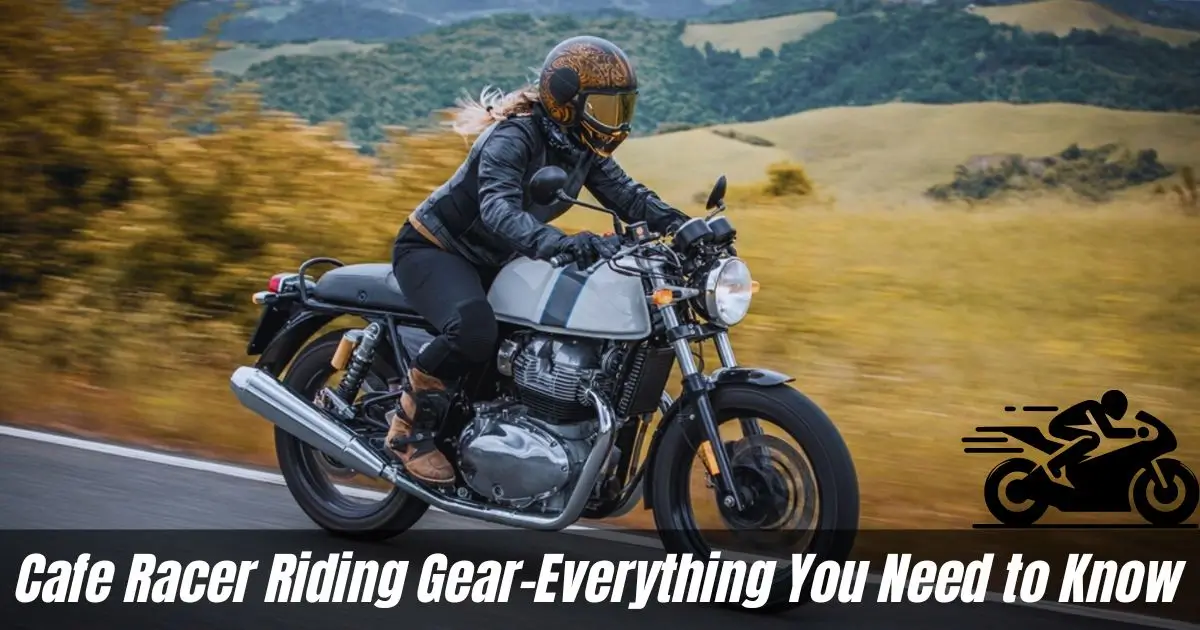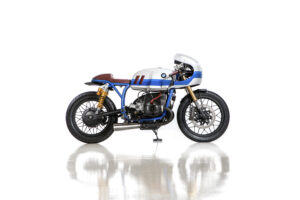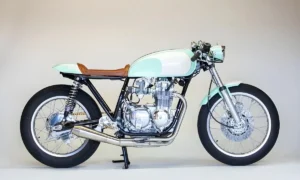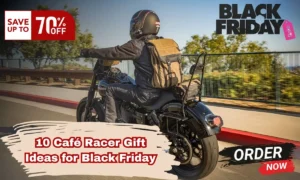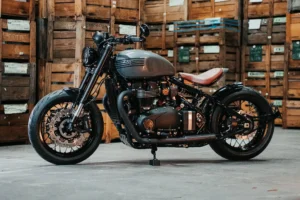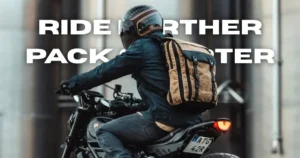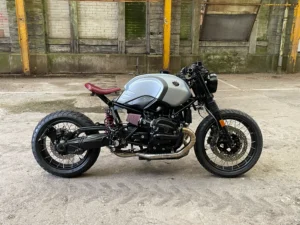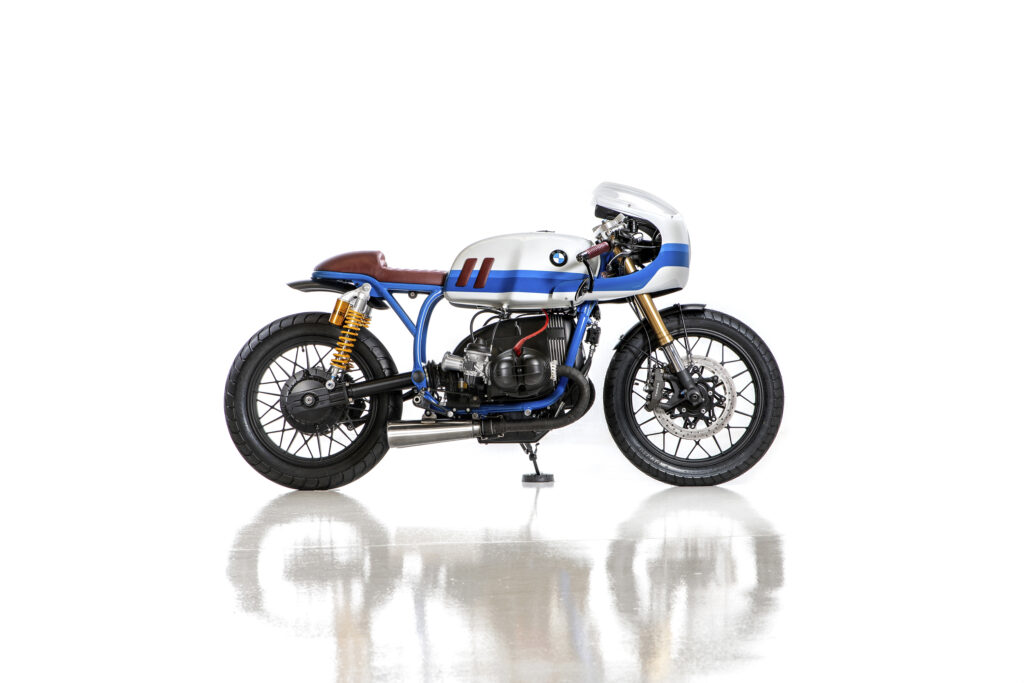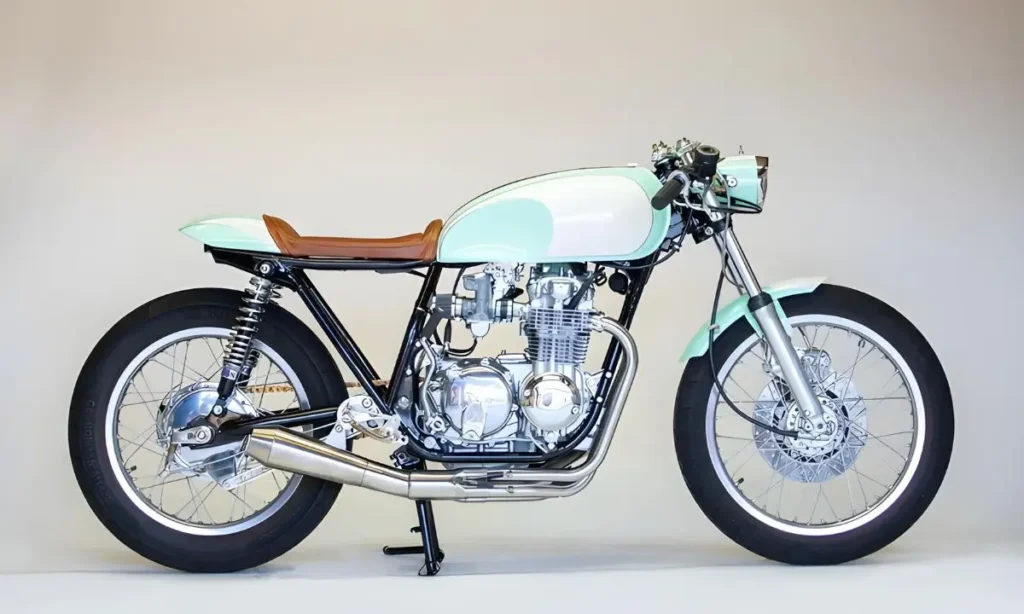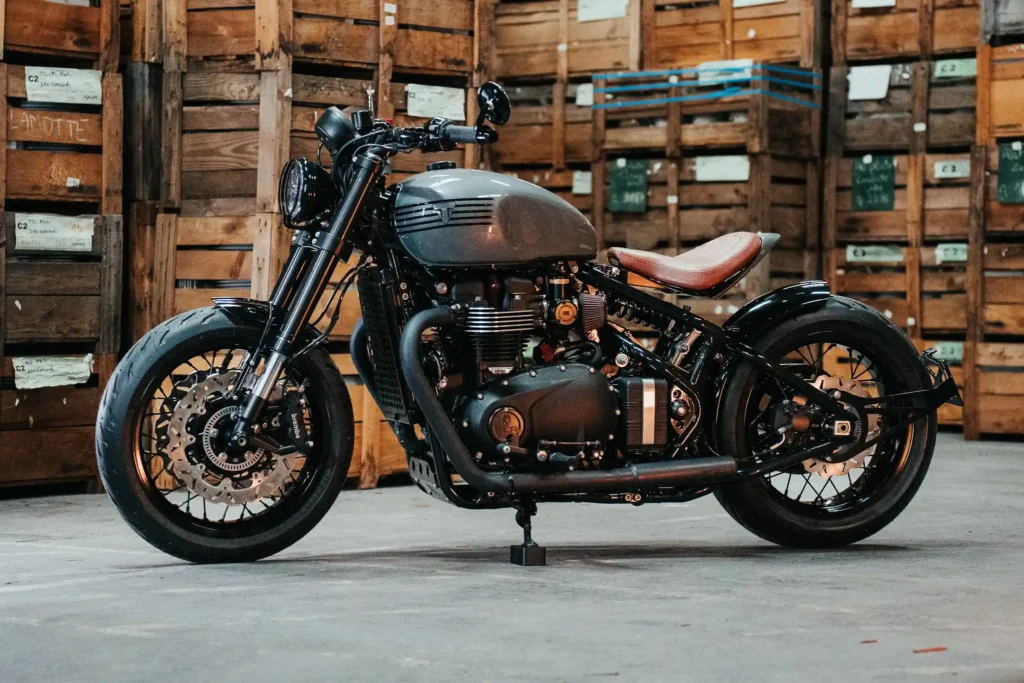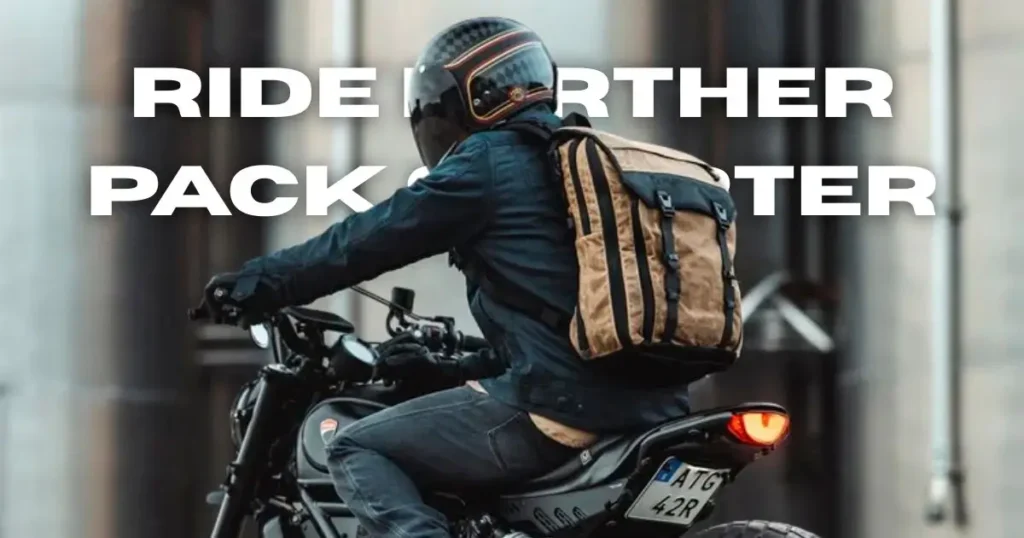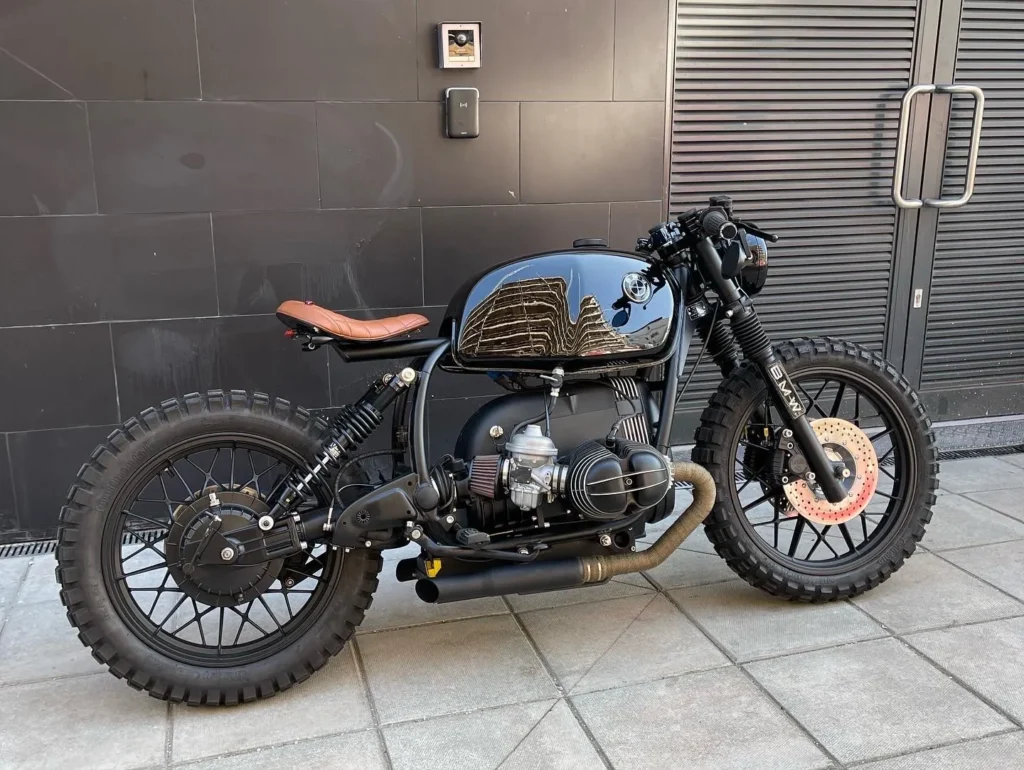Table of Contents
ToggleRiding a cafe racer is not just about speed or looks. It is about staying safe, riding smart, and choosing the right gear. The right equipment protects your body, improves control, and supports your riding habits. Each item must match both safety standards and your riding style.
This guide explains all the important gear for 2025. Helmets, jackets, gloves, and boots. It also covers locks, phone mounts, mirrors, and daily accessories. Each section shows what matters, why it matters, and which options work best for modern cafe racer riders.
Whether you ride daily or on weekends, this guide helps you choose gear that fits your bike, your city, and your way of riding. Everything is focused on function, comfort, and safety.
Why Riding Gear Matters for Every Cafe Racer?
Riding a cafe racer is an exciting and rewarding experience. The right gear helps you enjoy it fully by supporting comfort, control, and focus in every situation. It adds protection, improves performance, and helps you stay prepared for the road ahead.
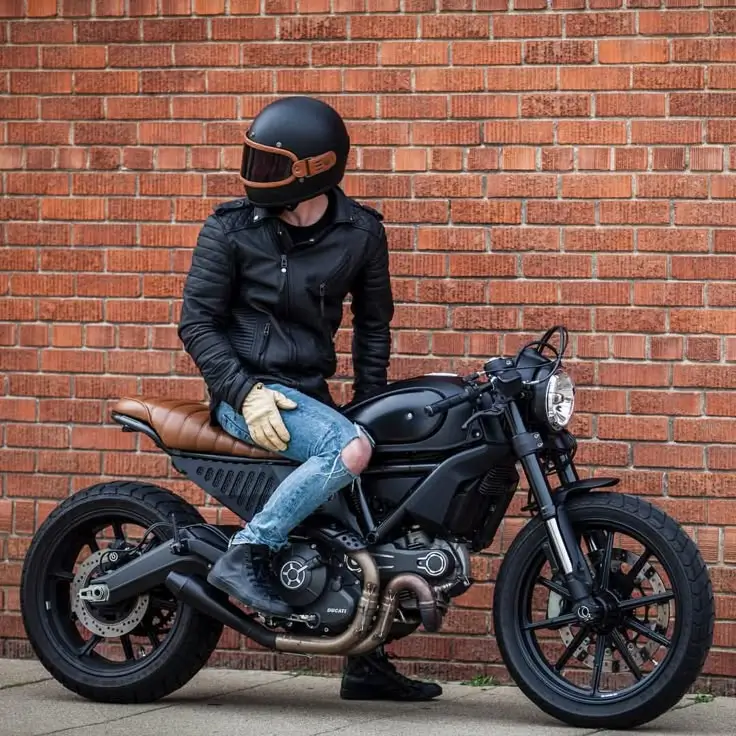
Each piece of gear plays a helpful role. Helmets provide head coverage. Jackets and gloves offer better grip and body support during rides. Boots give added stability while shifting, stopping, or standing. Accessories like ear protection or visibility tools help keep your ride smooth and distraction-free.
With good gear, every ride feels more confident and enjoyable. It helps you stay ready for changing roads, weather, and traffic. Whether you’re commuting through the city or riding on open streets, riding gear supports a safer, smoother, and more enjoyable journey from beginning to end.
Key gear and how each one supports your ride:
- Helmet – Covers and protects the head, improves focus and wind control
- Jacket – Supports posture, airflow, and shoulder-to-back comfort
- Gloves – Improves grip, hand control, and temperature balance
- Boots – Adds foot support, ankle stability, and firm ground contact
- Riding Pants – Covers the lower body while allowing flexible movement
- Ear Protection – Reduces wind noise, supports calm, clear attention
- Visibility Add-ons – Helps other drivers see the rider in all conditions
Cafe Racer Helmets
Every ride starts with a helmet. It protects the head, blocks wind, and completes the look of a cafe racer. In 2025, riders can choose from several types that combine safety and design.
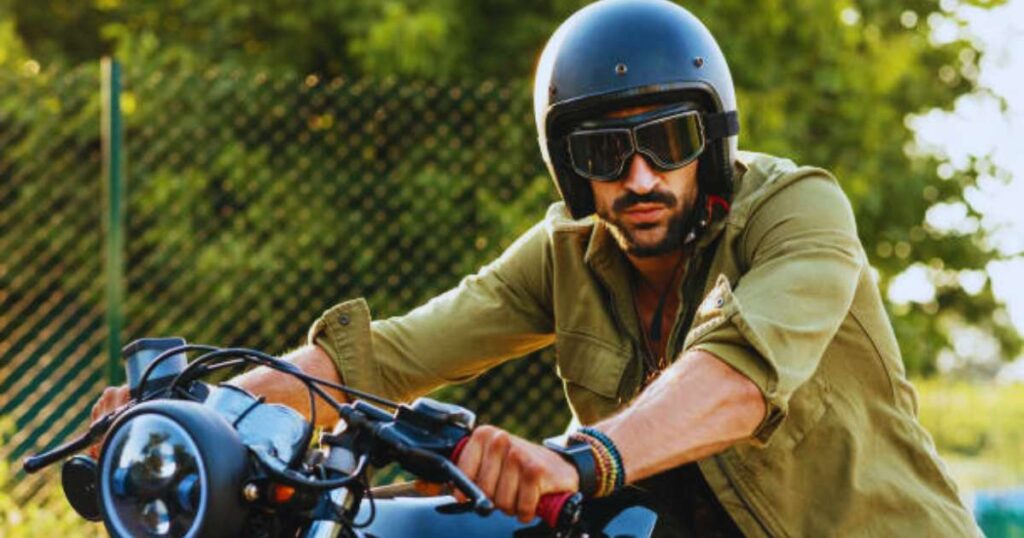
Helmet Types for Cafe Racers
Every rider needs a helmet. It is the most important gear for head protection. Cafe racer riders often prefer full-face, open-face, or modular helmets. Each type works in a different way. A full-face helmet covers the entire head and face.
It gives strong protection and reduces wind and noise. An open-face helmet covers only the top, back, and sides of the head. It gives more air but less protection for the face. A modular helmet looks like a full-face but has a flip-up front. It gives both comfort and coverage for short rides or city use.
Safety Certifications You Should Know
Helmets must pass safety tests. In 2025, the common certifications are DOT, ECE, and Snell. DOT is the U.S. standard. It checks basic safety for street riding. ECE is used in Europe. It includes more tests and is accepted in many countries. Snell is a higher-level certification. It includes strong impact tests and strict checks. A good helmet should have at least one of these labels on the back or inside. Check for it before buying.
Style vs. Safety: Finding the Balance
Cafe racers are known for vintage design. Many riders want a helmet that looks classic but keeps them safe. Today, brands offer helmets that use modern materials but keep a retro look. Riders can find full-face helmets with round shells and low profiles. These helmets fit the cafe racer style and still follow safety rules. It is important to choose a helmet that protects the head first. Style comes after safety.
Top Picks: Best Cafe Racer Helmets in 2025
Some helmets work better for cafe racer riders. In 2025, popular models include the Bell Bullitt, Shoei Glamster, and AGV X3000. These helmets offer strong shells, soft liners, and clear visors. They meet safety standards and fit well with vintage bikes. Riders can also look at the Hedon Heroine or Biltwell Gringo. These helmets have fewer features but focus on design. Choose a helmet that fits your head size, matches your riding needs, and gives comfort for long use.
Jackets, Gloves & Protective Apparel
Riding with the right apparel brings confidence, comfort, and peace of mind. A well-fitted jacket, solid gloves, and proper boots help you ride longer and feel safer in every condition.
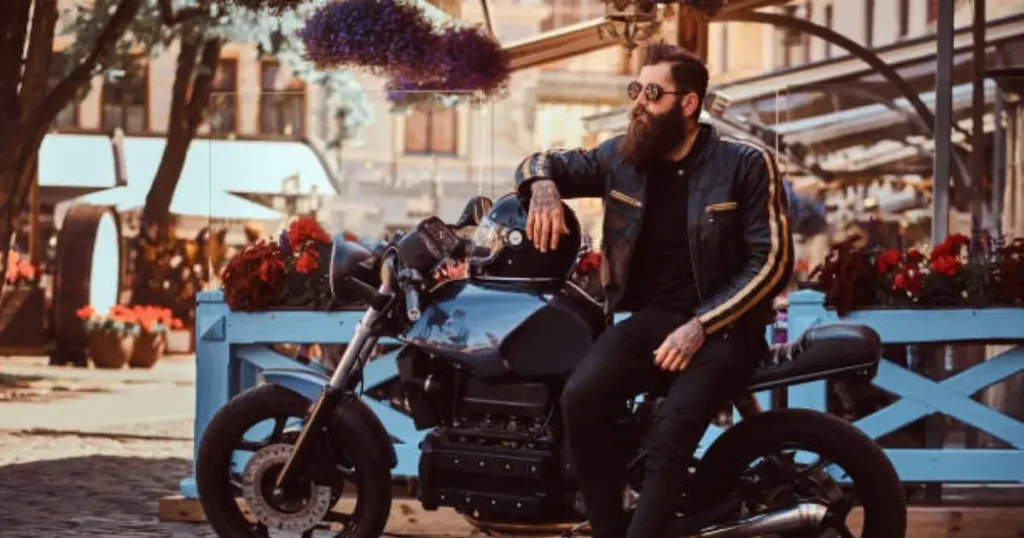
Riding Jackets
A proper jacket protects the upper body. It reduces injury during accidents and shields against wind and weather. Cafe racer riders often choose leather or textile jackets. Leather offers high abrasion resistance and lasts for many years.
Textile jackets are lighter and work better in hot or rainy weather. Many modern jackets now include CE-rated armor in the elbows, shoulders, and back.
This padding absorbs impact during crashes. Look for jackets with secure zippers, breathable linings, and strong stitching. Choose a design that fits close to the body but allows free movement.
Riding Gloves
Gloves protect the hands from injury, heat, and cold. They improve grip and control while riding. A good pair covers the wrist and has strong knuckle protection. Riders should choose gloves based on weather and ride time. Summer gloves are thin, light, and let air pass through.
Winter gloves have thick insulation and waterproof layers. Many gloves include palm sliders and touchscreen tips. These features help during long rides and phone use without removing the glove.
Pants and Riding Jeans
Leg protection matters during every ride. Riding jeans combine normal looks with strong safety. They include hidden armor and abrasion-resistant fabric.
Most riding pants use Kevlar or similar fiber to protect from road contact. Some include stretch panels for better comfort on the bike.
Riders should check if the pants have CE-approved armor in the knees and hips. Choose pants that match both safety and comfort, especially for daily riding in the city.
Riding Boots
Motorcycle boots protect the feet, ankles, and lower legs. They give support during movement and while stopping at lights or traffic. A good riding boot should cover above the ankle, have a strong sole, and include impact protection.
Cafe racer riders often look for boots that match both classic style and riding use. Many boots now include hidden armor and oil-resistant soles. Choose boots with lace or zipper systems that hold tight while riding. Comfort during walking is also important for city riders.
Motorcycle Locks & Anti-Theft Accessories
Protecting your bike feels better than worrying about it. A strong lock setup adds safety and reduces stress when parking in public places. Every rider benefits from using the right tools.
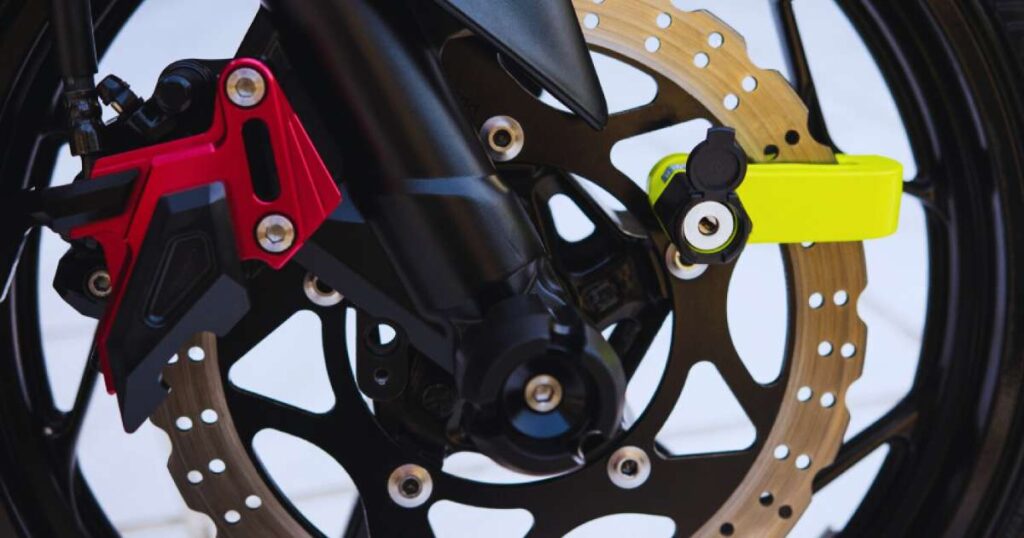
Why Security Gear Is Essential in Urban Areas
Motorcycle theft is common in busy cities. Cafe racer bikes are often light, small, and easy to move. This makes them a target. A good lock system prevents fast theft and delays the action. It also lowers the risk when the bike is parked outside shops, homes, or workplaces.
Riders who park in public areas must use at least one strong security item every time. In some places, insurance providers also ask for certified locks to cover the vehicle.
Types of Motorcycle Locks
Different lock types offer different levels of safety. A disc lock fits on the brake disc and stops the wheel from turning. It is small and quick to use. A chain lock goes through the frame or wheel and wraps around a pole or ground anchor.
It offers high strength and works for long parking hours. U-locks are shorter but thicker. They also go through the wheel or frame. Smart locks use GPS or alarms.
They alert the rider when someone touches the bike. Each type has a purpose and should match the place and time of use.
Lock Placement Tips
Lock placement affects how well it protects the bike. Riders should always connect the frame or rear wheel to a fixed object. Chains should not rest on the ground. This makes cutting harder. Disc locks work better with added alarms or when used with other locks. Use tight angles when locking. Loose chains or U-locks give room for tools. Riders should also cover their bikes when parked. A cover hides the model and makes it less visible to thieves.
Best Motorcycle Locks for Cafe Racers in 2025
In 2025, some locks give strong results for cafe racer owners. The Kryptonite New York Fahgettaboudit chain is known for its strong links.
It works well with ground anchors. The Abus Granit Detecto disc lock includes a loud alarm system. It fits modern and vintage wheels. The Oxford Boss Alarm U-lock offers a thick shackle and alarm features. Monimoto 9 is a wireless GPS tracker that fits inside the bike and sends alerts to a phone.
Riders can choose based on where they ride and how long they leave the bike alone. Every lock adds one more step against theft.
Phone Mounts & Visibility Accessories
Simple accessories can improve comfort, awareness, and safety while riding. These tools support control, visibility, and convenience, especially in city traffic or long-distance travel.
Phone Mounts
Many riders use their phones for navigation or ride tracking. A strong phone mount keeps the device stable and within view. It should hold the phone firmly and reduce shaking during rough roads. Some mounts use rubber grips for flexibility.
Others use metal clamps with secure locks. Riders should select a model that matches their handlebar shape and phone size. The screen must remain visible without blocking essential controls. Waterproof cases are helpful in rain.
Some mounts also include charging ports that connect to the bike’s battery system. These features are useful for both short trips and daily commuting.
Visibility Enhancements
Visibility gear increases safety in low light and poor weather. Reflective vests, helmet lights, and clip-on LED bands make riders more noticeable to others on the road. These items are lightweight, easy to attach, and do not affect comfort or balance.
Reflective stickers can also be placed on helmets, gloves, or bags to increase visibility from different angles. All riders should check visibility gear before night or early morning rides. A few simple additions can lower risk and support safer travel in all environments.
Must-Have Riding Accessories (Everyday Essentials)
Good accessories solve real problems. They add storage, comfort, and weather protection without taking away from the look of your bike. Every piece has a clear benefit for daily rides.
Saddlebags & Tank Bags
Storage matters during daily rides. Riders often need space for tools, documents, or light shopping. Saddlebags hang on the side of the bike. Tank bags sit on top of the fuel tank. Both types help carry items without wearing a backpack.
For riders who prefer carrying gear off the bike, explore our Motorcycle Backpacks for Riders Guide. It highlights waterproof and aerodynamic designs that match the café racer style and keep essentials protected.
Cafe racer riders prefer compact bags with simple shapes. Many bags come with straps or magnets for easy fit. Some include rain covers or are built from waterproof materials. The bag should stay firm at high speeds and not block rider movement.
Ear Protection & Bluetooth Headsets
Wind noise can damage hearing over time. Earplugs reduce high sound levels while letting traffic noise through. Riders should use soft, reusable plugs that fit deep but stay comfortable. Bluetooth headsets allow hands-free calls and GPS directions. Some units connect with other riders for group trips.
Headsets should clip safely to the helmet and include clear speakers. Battery life and button size matter for long rides and cold weather use.
Rain Gear & Weather-Ready Add-ons
Weather changes fast, especially in the city. Riders need gear that works in wet or cold conditions. A rain jacket keeps the body dry and folds into a small roll. Waterproof pants protect the lower half without overheating. Boot covers stop water from entering shoes.
Riders should also carry gloves made for wet weather. These items should be light, strong, and easy to pack under the seat or in a bag.
Hydration & Long-Ride Comfort Accessories
Riding in heat or traffic needs good hydration. A reusable bottle helps carry water without waste. Some riders use hydration packs that fit under jackets. Seat pads reduce pressure during long trips.
These pads attach with straps and add soft layers without changing seat shape. Anti-fog sprays help keep helmet visors clear in the rain or cold. Each small item helps improve comfort and focus during short or long rides.
Seasonal Riding Gear Checklist
Each season brings new riding opportunities. With the right gear, you can stay comfortable and protected all year. Preparation lets you enjoy the road in every weather.
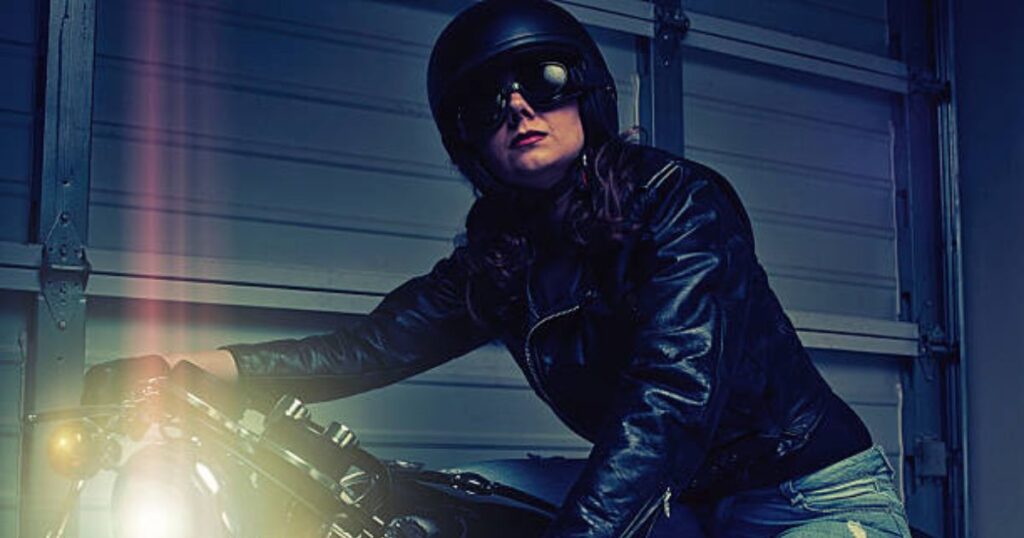
Summer Gear
Hot weather needs light and breathable gear. Riders should wear mesh jackets with airflow panels. These jackets include basic armor but let air pass through. Summer gloves are thin and allow hand movement. Riders can also use cooling base layers under their clothes. These layers absorb sweat and lower body heat. Helmets with large vents give better comfort during slow city rides. Choose light colors to reduce heat on sunny days.
Winter Gear
Cold air affects control and comfort. A winter jacket should have thick liners and a windproof shell. Thermal gloves protect the fingers from freezing. Riders can also wear neck tubes and balaclavas to cover open skin. Heated grips or handlebar covers help during long rides. Some boots include insulation to keep the feet warm. Every part of the body needs proper cover in cold months.
Rain Gear
Rain gear must block water and dry fast. A full rain suit covers the jacket and pants. It must seal at the wrists, ankles, and neck. Waterproof gloves and boot covers keep hands and feet dry. Riders should store this gear in an easy-to-reach bag or under-seat space. A clear visor with anti-fog coating gives better vision in wet weather. Wet roads also need slow and careful riding.
Transitional Seasons (Spring and Autumn)
These seasons bring mixed weather. Riders need flexible gear for cool mornings and warm afternoons. A jacket with a removable liner works well. Gloves should balance warmth and grip. Layering helps adjust body temperature. A windproof vest under the jacket adds comfort without bulk. Riders should also check the tire grip and brake response during changing weather. Light rain gear should stay close, even on short rides.
Maintenance & Gear Care Tips
Taking care of your gear keeps it working well and feeling fresh. Clean, well-maintained items last longer and perform better. Small habits can protect your safety and your wallet.
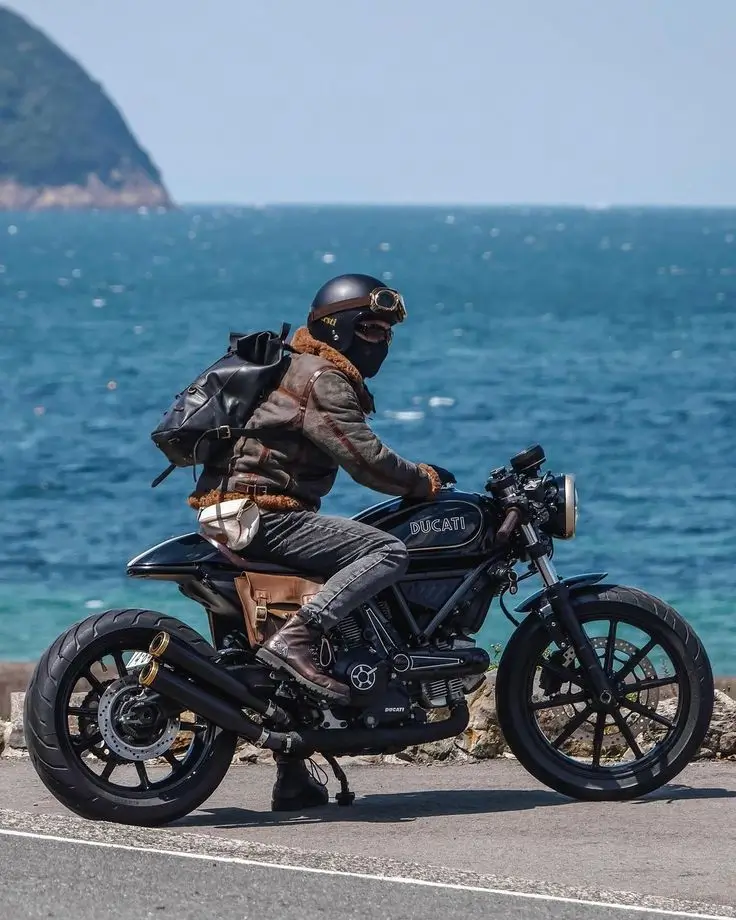
Helmet Care
Helmets collect dust, sweat, and road dirt. Riders should clean the outer shell with a soft cloth and mild soap. The visor needs a non-scratch cleaner and should be wiped dry with a clean towel. Most modern helmets have removable liners. These liners can be washed by hand using cold water and mild detergent. Dry all parts in a cool area, away from direct sunlight. Never use strong chemicals, as they damage the helmet material and reduce its strength.
Jacket and Glove Care
Jackets and gloves need regular cleaning to keep their shape and function. Leather gear should be wiped with a damp cloth, then treated with leather conditioner. This keeps the surface soft and prevents cracks. Textile jackets must be cleaned based on the label instructions.
Usually, gentle machine washing or hand cleaning is enough. Glove cleaning depends on the material. Leather gloves need special care, while textile ones can be cleaned with soap and water. Always let them dry slowly in the shade.
Pants and Boots Maintenance
Riding pants collect dust from roads. Riders should shake out loose dirt before washing. Textile pants with armor must be handled gently. Remove pads before cleaning. Use low heat for drying to protect the fabric. Boots take heavy wear, especially in rain or mud.
Clean the outer part with a brush and warm water. Leather boots need regular oil or wax to stop water from entering. Soles should be checked often. Worn soles reduce grip and must be replaced when needed.
Gear Storage and Replacement
Proper storage extends gear life. Riders should store helmets in a soft bag on a stable shelf. Jackets and pants must hang on wide hangers to keep their shape. Gloves and boots should stay in a cool, dry place. Keep gear away from heaters or sunlight. Gear has a usage limit.
Helmets should be replaced every 5 years, or after a crash. Jackets, gloves, and pants need replacement if the material thins, zippers break, or armor shifts. Regular checks help riders stay safe on every ride.
Trusted Brands & Where to Buy
Reliable brands build gear you can count on. Choosing the right product from a trusted store makes riding safer and more enjoyable. Quality gear improves every part of your journey.
Top Cafe Racer Gear Brands in 2025
Some brands focus on both safety and classic design. Riders often choose them for quality and long use. Bell, Shoei, and AGV lead in helmet safety with models that fit retro bikes. Biltwell and Hedon offer vintage looks with modern shell materials.
For jackets and gloves, Roland Sands Design and Belstaff provide strong protection with clean lines and leather options. REV’IT!, Fuel Motorcycles, and Tucano Urbano make riding gear that suits both warm and cold seasons. TCX, Stylmartin, and Forma produce protective boots with a casual look. These brands stay reliable across different weather, riding hours, and bike setups.
Where to Buy Cafe Racer Gear Online?
Most cafe racer gear featured in this guide is available on Amazon, which offers a wide selection of helmets, jackets, gloves, locks, and accessories from well-known riding brands. Riders can browse multiple options in one place, compare features, and choose based on size, style, and safety needs.
Amazon listings often include verified customer reviews, detailed product specs, and fit information, which help riders make informed decisions. Many items come with fast shipping and flexible return policies, which are useful when ordering gear that must fit correctly and perform reliably.
For riders who value convenience, Amazon remains a practical source for exploring full gear kits, checking real-world feedback, and accessing seasonal product updates—all from trusted manufacturers.
Final Thoughts
Riding a cafe racer needs more than a well-tuned engine. It also needs gear that protects, supports, and fits your style. Each item in this guide serves a real purpose. Helmets protect the head. Jackets, gloves, pants, and boots guard the body. Locks and mounts improve daily safety. Bags, lights, and tools help with travel and weather.
Choosing the right gear means looking at how and where you ride. City streets, weekend roads, and changing seasons all bring different needs. Gear should match those needs without lowering comfort or safety. Every rider has a different routine. Every bike has a different setup. A good gear choice connects both.
Riders should check their gear often. Replace items when they wear out. Keep them clean, dry, and stored in safe places. Safety gear only works when it is in good shape. Buying trusted brands and following safety tips helps make every ride better and safer.
This guide gives a full view of what you need in 2025. Use it to pick what fits your ride. Build a kit that matches your road, your bike, and your plan. Keep your gear updated. Ride smart. Ride prepared.
FAQs
What is the most important gear for cafe racer riders?
All gear matters, but the helmet is the most essential. It protects the head and is required by law in many places. A good helmet combines safety certification, comfort, and visibility.
Can I ride a cafe racer in casual clothes for short trips?
It’s always better to wear protective gear, even for short rides. A light jacket, gloves, and riding boots offer much more support and safety than regular clothes without reducing comfort.
How do I choose the right size for my riding gear?
Check size charts for each brand, and read reviews for fit advice. Jackets, gloves, helmets, and boots should fit snugly but allow full movement. Gear that’s too loose may not protect well.
What is CE-rated armor in motorcycle gear?
CE-rated armor is protective padding tested for impact resistance. It’s usually placed in shoulders, elbows, knees, back, and hips. Many modern jackets and pants include removable CE pads.
Do cafe racer helmets have to look vintage?
No. Many cafe racer riders prefer retro-style helmets, but the main goal is protection and fit. Modern helmets with clean designs also match the cafe racer aesthetic without sacrificing safety.
What’s the difference between waterproof and water-resistant gear?
Waterproof gear blocks rain fully and stays dry inside. Water-resistant gear repels light moisture but may not hold up in heavy rain. For wet climates, waterproof options are more reliable.
How often should I replace my riding gear?
Replace your helmet every 5 years or after any fall. Jackets, gloves, and pants should be replaced if they lose shape, padding, or stitching strength. Boots should have firm soles and ankle support.

